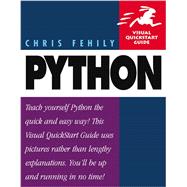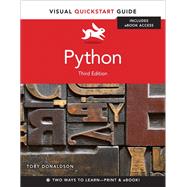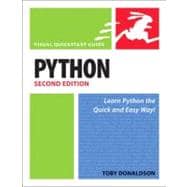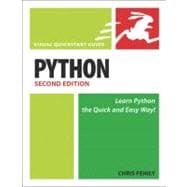Python Visual QuickStart Guide

Python Visual QuickStart Guide
- ISBN 13:
9780201748840
- ISBN 10:
0201748843
- Edition: 1st
- Format: Paperback
- Copyright: 10/26/2001
- Publisher: Peachpit Press
- Newer Edition
Rent
Sorry, this item is currently unavailable.
Note: Supplemental materials are not guaranteed with Rental or Used book purchases.
Extend or Purchase Your Rental at Any Time
Need to keep your rental past your due date? At any time before your due date you can extend or purchase your rental through your account.
Summary
Untitled Named after the Monty Python comedy troupe, Python is an interpreted, open-source, object-oriented programming language. It's also free and runs portably on Windows, Mac OS, Unix, and other operating systems. Python can be used for all manner of programming tasks, from CGI scripts to full-fledged applications. It is gaining popularity among programmers in part because it is easier to read (and hence, debug) than most other programming languages, and it's generally simpler to install, learn, and use. Its line structure forces consistent indentation. Its syntax and semantics make it suitable for simple scripts and large programs. Its flexible data structures and dynamic typing allow you to get a lot done in a few lines. To learn it, you'll need is some basic programming experience and a copy of Python: Visual QuickStart Guide.In patented Visual QuickStart Guide fashion, the book doesn't just tell you how to use Python to develop applications, it shows you, breaking Python into easy-to-digest, step-by-step tasks and providing example code.Python: Visual QuickStart Guideemphasizes the core language and libraries, which are the building blocks for programs. Author Chris Fehily starts with the basics - expressions, statements, numbers, strings - then moves on to lists, dictionaries, functions, and modules before wrapping things up with straightforward discussions of exceptions and classes. Some additional topics covered include:- Object-oriented programming- Working in multiple operating systems- Structuring large programs- Comparing Python to C, Perl, and Java- Handling errors gracefully.









